Will My Fall Mums Live Through The Winter?
Will My Fall Mums Live Through The Winter?
When people get a chrysanthemum plant (Dendranthema x grandiflora) in the fall, they often wonder if it’s possible to have them return from year to year. Our customers have several questions about these lovely seasonal plants, so here are some tips to help:
“Can I plant the mums from the hanging basket into the ground after they finish flowering?”
Yes, you can transfer the plants from the basket into the ground, but do it as soon as the flowers start to fade. Find a sunny place in your garden, loosen the soil well with a shovel, and place the plants there. Do not cut the foliage or spent flowers off. Water the plant well and remember to keep it watered once a week into December should it not rain.
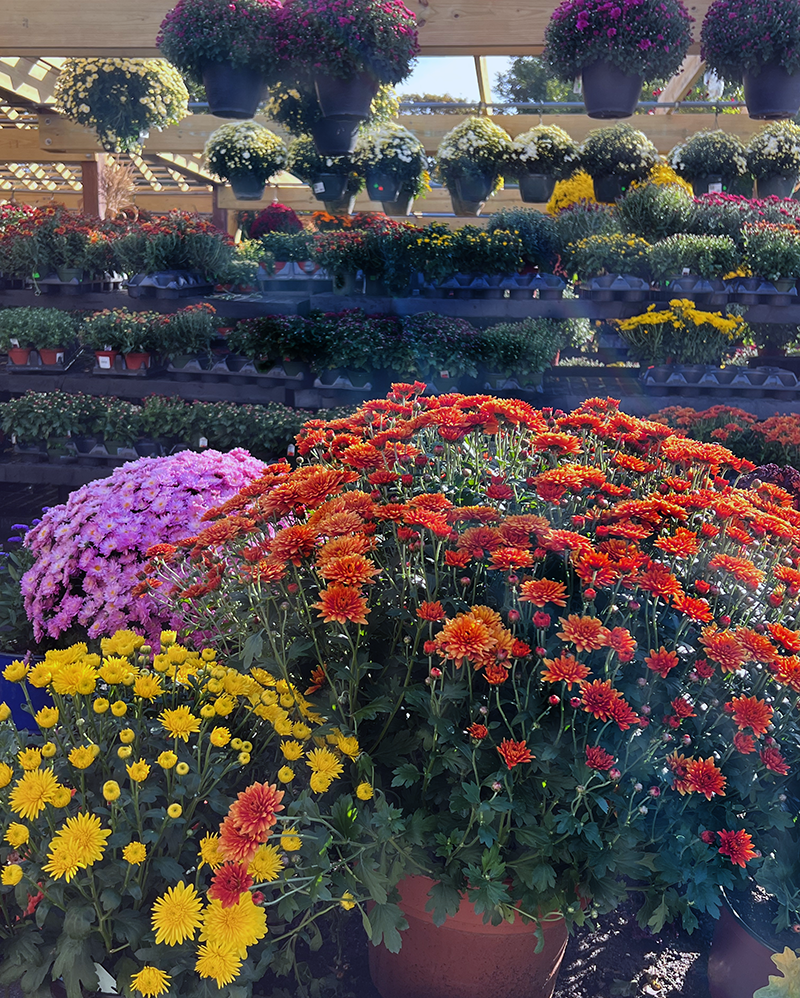
“Can I keep a pot of mums for next year by bringing them into the house?”
You’re not likely to be successful bringing these plants indoors, and they won’t be very attractive in your home anyway. If you want to try and save the plants for next year, it would be best to plant them in the ground.
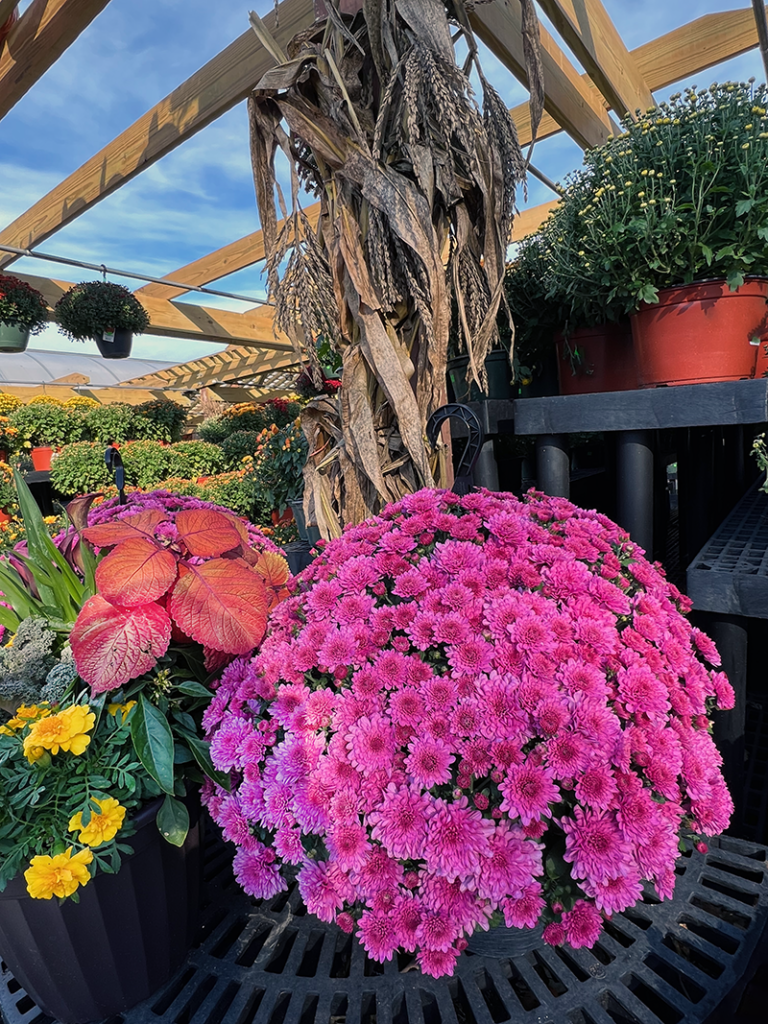
“I planted many chrysanthemums last year but none of them came back. I thought they were supposed to be hardy.”
The term “hardy mums” is often applied to these plants but it’s a bit misleading. The “hardy” description refers to the plants ability to survive light frosts in the fall. While many of them can be perennial and return the following year in a garden, they are mostly raised to be autumn annuals. If you do want to try keeping mums alive through the winter, follow these steps: 1. Plant them in the ground as soon as possible. The longer they have to establish root systems before the ground gets cold, the better. 2. Water them once a week if it doesn’t rain, continuing this into December. The mums you buy have very tight, pot-bound root systems, which dry up quickly. Most people remember to water these plants while they are blooming, but once the flowers fade they’ll stop keeping the roots moist. The majority of mums that seem to have died over the winter have really dried up in the fall. 3. Do not cut the old foliage off in the fall. Leave the dried or wilted stems in place until the spring. This offers some greater protection to the plant. In spring you should see young, green shoots at the base of the old stems. When these appear, you can safely cut the old parts of the plant off.
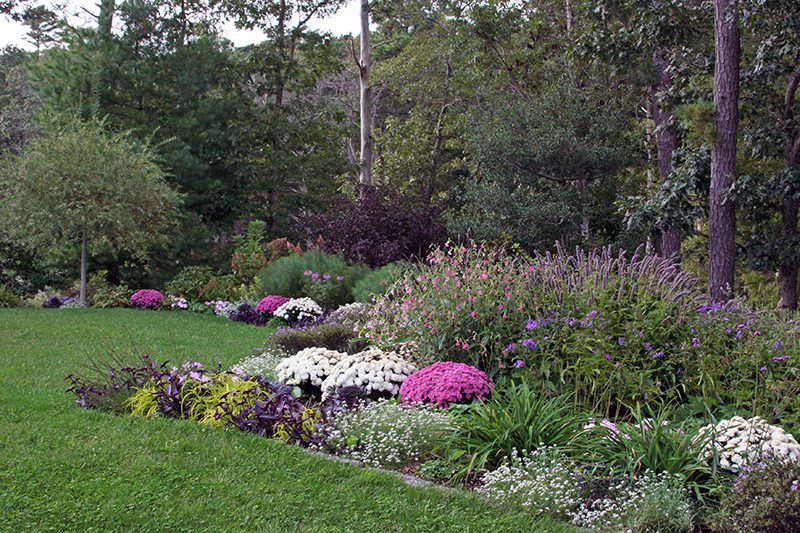
“My mums came back but were taller and not as full the following year. What happened?”
Although some chrysanthemums have been bred to remain short, full and bushy, others only become this way with pinching or shearing early in the season. That plant that you’ve purchased in the fall had probably been sheared or pinched at least once by the grower early in the summer. If you want the same effect, you can take a scissors or shearing tool and clip off the top tips of your plants in May. Some repeat this in late June or early July, but the later you pinch or shear, the later your plants will bloom. Begin by clipping off about an inch off the tops of your plant in mid-May and see if that produces the height and fullness you’re looking for. If the plants seem to be taller and still thin in early July, pinch or shear them one more time.
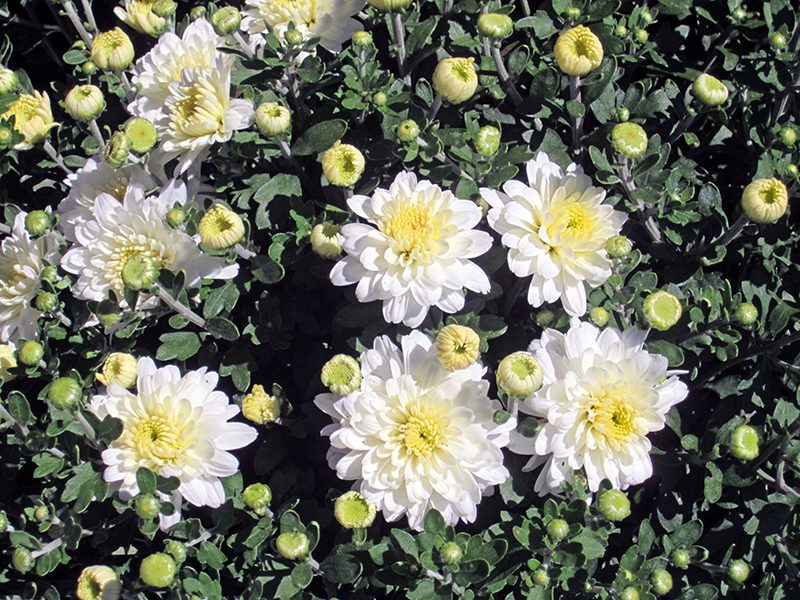
For a behind-the-scenes look at what growers do to produce the lovely mums we stock in the fall, see this article from the UMASS Floriculture Department.
Like other seasonal annuals, it’s perfectly fine to appreciate hardy chrysanthemums while they are colorful for porch or garden displays, but not feel compelled to save them. Toss finished plants in your compost pile after the flowers fade. These plants were renamed Dendranthema x grandiflora by botanists some years ago, but are still commonly called mums or chrysanthemums.
There are several truly hardy varieties of mums, including the popular ‘Sheffield Pink’ Dendranthema. Look for these in our perennial section during the growing season.
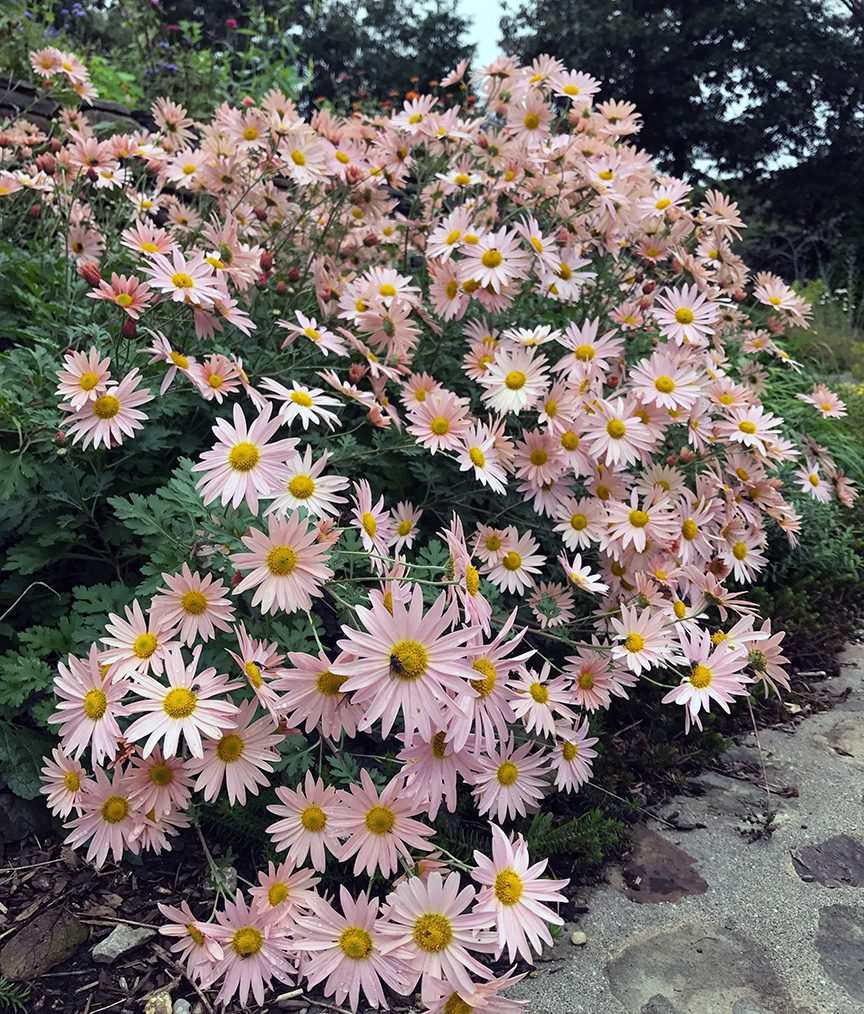
Subscribe To Our Newsletter
Sign up for our weekly email about sales and events.
